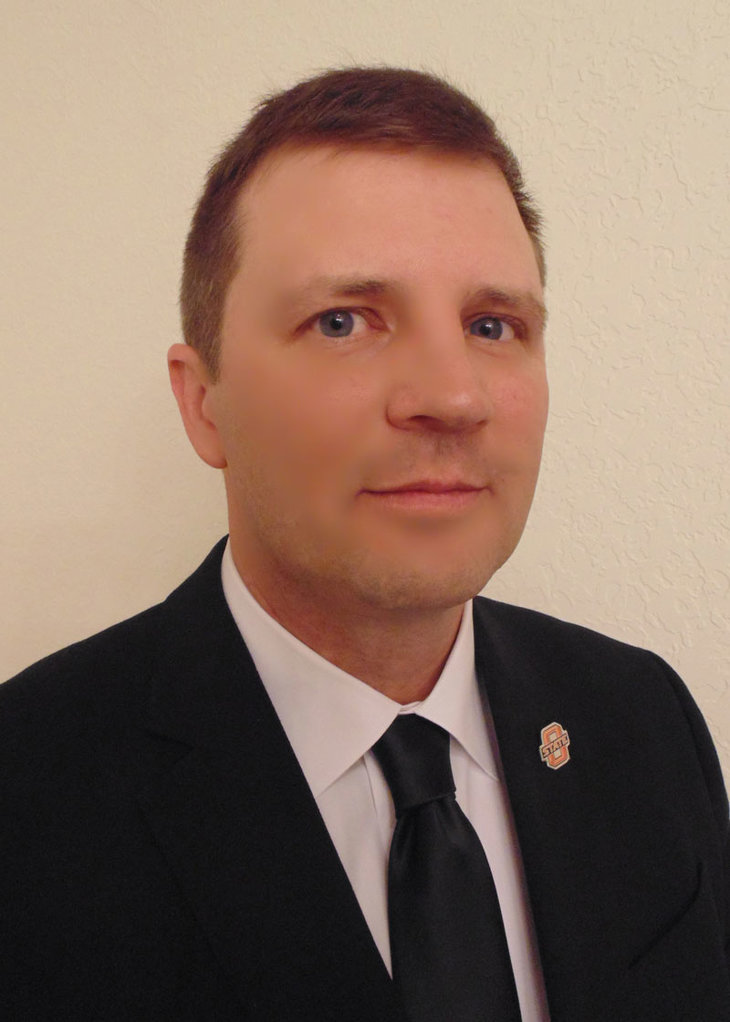OSU MBA alumnus receives funding for programming model
Monday, December 5, 2016

One Oklahoma State University student went above and beyond on a Quantitative Analysis class project creating something that would positively affect the medical industry.
Benjamin Wagener faced the task of developing a linear programming model in a Quantitative research analysis class. After a discussion with his wife, Bethany, about difficulties as a medical provider and Hepatitis C Virus (HCV) clinical coordinator for the Oklahoma Department of Corrections, Wagener discovered his topic: treatment for the HCV in infected inmates.
To choose which HCV infected inmates to treat, she had to search more than 2,300 medical files. Wagener suggested a spreadsheet to simplify her job a little when gathering the data of the HCV.
During development of the model, Wagener expressed his appreciation of Rick Wilson, course professor and head of the Department of Management Science and Information Systems in the Spears School of Business. Wilson found a few problems to complete the model. Wilson was pleased with Wagener’s ability to apply course information to a meaningful project. Wagener expressed how much he learned to help develop a program that would change how people in the medical industry search for information.
Treatment is expensive, minimizing the time it takes for physicians to locate inmates infected with HCV could lead to treating more inmates or lowering treatment costs. Medication to cure HCV costs approximately $1,000 per pill, but the treatment to cure liver failure, the result of untreated HCV, costs about four times as much.
After information spread about Wagener’s model, he was asked to present at the National Hepatitis Correctional Network’s annual meeting. HCV treatment was a huge topic at the convention. After presenting, Wagener was asked to work with the Tennessee Department of Corrections to prioritize its treatment.
Ramesh Sharda, vice dean of OSU’s Watson Graduate School of Management, believes success stories as this are what make the new addition to the MBA program possible. This is a real-world example of the significance provided through exceptional analytics professors such as Wilson.
A senior scientist at Gilead Sciences considered the grant proposal for HCV treatment in a correctional setting using Wagener's data analytic approach. The proposal has been well received from Gilead and was evaluated through Gilead's Continuum from Identification through Elimination program (HCV CITE). Sixty-six applications from 16 countries sought funding for Investigator Sponsored Research (ISR). Wagener’s proposal was the only correctional application selected to advance to sponsorship from Gilead.
The Wageners met with Dr. Cooper, CMO of Oklahoma County jails, in July to discuss implementing the model in the jail systems. Next, they met with administrators in the Oklahoma Department of Corrections (ODOC) to finalize an approach to grant funding. This ISR states the proposal from the ODOC “is in collaboration” with OSU, as Wilson remains a committed author in the fibrosis framework. They are eager to get the model and process of HCV treatment prioritization published to help other correctional systems.
Wagener's “Fibrosis Framework” has proved to be vital as an HCV treatment prioritization tool within the ODOC. The Wageners are still involved with the National Hepatitis in Corrections Network. Wagener's model will likely be shared at the national meeting in March 2017 to help correctional agencies prioritize their HCV population for the expensive, curative treatment.
It is amazing that an impactful career is forming, the opportunity has arisen to help people, and to reduce costs Oklahoma taxpayers incur from HCV treatment of inmates.
Next, the ODOC and Gilead enter the contract phase with expectations of starting the project in January.
